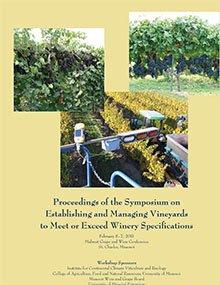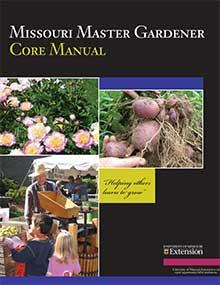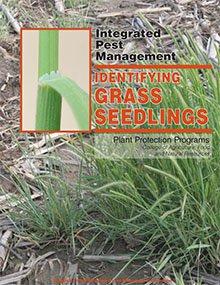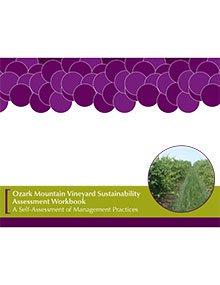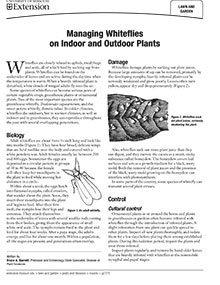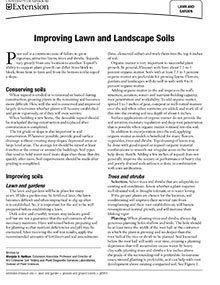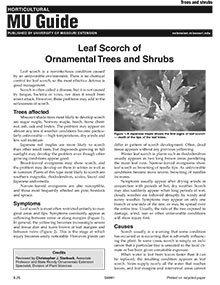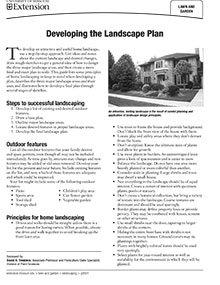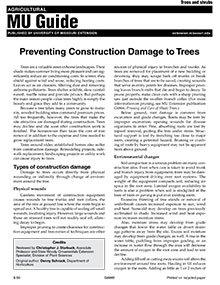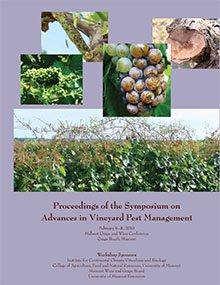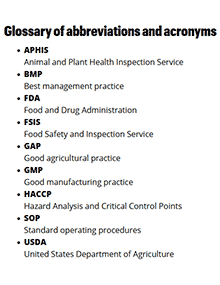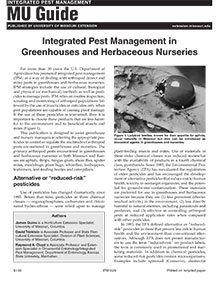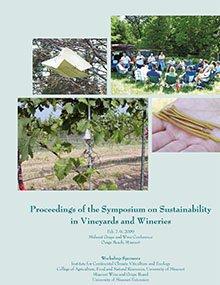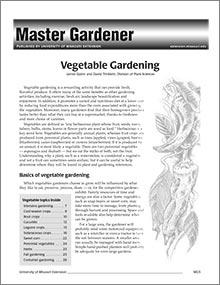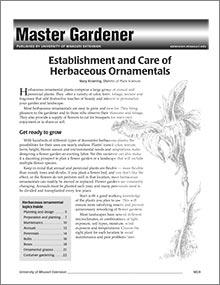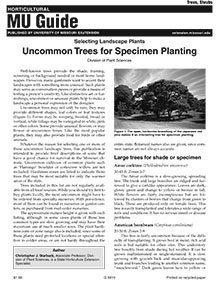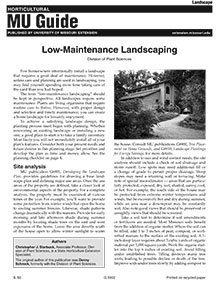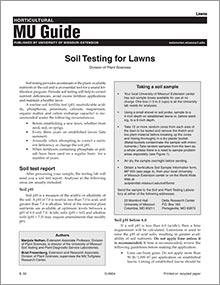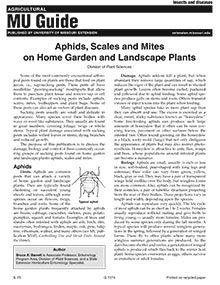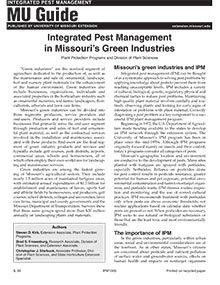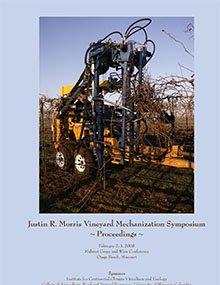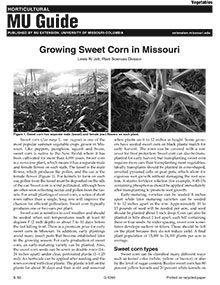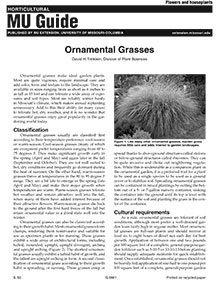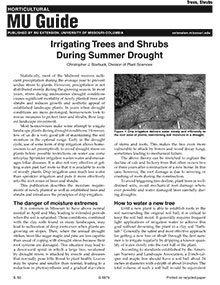The following publications cover topics related to Commercial Horticulture. For a complete list of MU Extension publications, visit the main Publications page.
Proceedings of the Symposium on Establishing and Managing Vineyards to Meet or Exceed Winery Expectations
New
Editor's note
The following abstract describes a publication that is only available as a downloadable PDF.
Missouri Master Gardener Core Manual
New $40
Editor’s note
Identifying Grass Seedlings
Revised
Learn to identify grass seedlings using key features like stem shape, ligules, and auricles to manage weeds effectively.
Ozark Mountain Vineyard Sustainability Assessment Workbook: A Self-Assessment of Management Practices
New
Editor's note
The following abstract describes a publication that is only available as a downloadable PDF.
Managing Whiteflies on Indoor and Outdoor Plants
Revised
Whiteflies are closely related to aphids, mealybugs and scale, all of which feed by sucking sap from plants. Whiteflies can be found on the undersides of leaves and are active during the daytime when the temperature is warm. When a heavily infested plant is disturbed, white clouds of winged adults fly into the air.
Improving Lawn and Landscape Soils
Revised
Learn how to enhance lawn and landscape soils by improving structure, drainage, and fertility through soil testing and organic amendments.
Leaf Scorch of Ornamental Trees and Shrubs
Reviewed
Leaf scorch is a noninfectious condition caused by an unfavorable environment. There is no chemical control for leaf scorch, so the most effective defense is good management.
Developing the Landscape Plan
Reviewed
Develop an attractive and useful home landscape with this step-by-step approach. Learn principles to keep in mind, the uses of the three major landscape areas, and how to develop a plan with sketches in this University of Missouri Extension guide.
Preventing Construction Damage to Trees
Reviewed
Avoid tree damage during construction by preventing injuries and soil compaction; use protective measures to keep trees healthy.
Food Defense: Protecting the Food Supply from Intentional Harm, Page 5
New
This glossary spells out abbreviations and acronyms related to food defense.
Proceedings of the Symposium on Sustainability in Vineyards and Wineries
New
Editor's note
The following abstract describes a publication that is only available as a downloadable PDF.
Vegetable Gardening
New $10
Vegetable gardening is a rewarding activity that can provide fresh, flavorful produce. It also offers the benefits of exercise, fresh air and landscape beautification. Learn to grow your own vegetables so you can eat fresh and save on groceries.
Herbaceous Ornamentals
New $10
Discover the beauty of herbaceous ornamentals—annuals and perennials that add color, texture, and fragrance to your garden with easy-growing versatility
Selecting Landscape Plants: Uncommon Trees for Specimen Plantings
Reviewed
Check out some uncommon landscape trees that have a good chance for survival in the Missouri climate.
Low-Maintenance Landscaping
Reviewed
Create a beautiful, low-maintenance landscape with thoughtful design, proper plant selection, and easy-to-care-for features that suit your space and lifestyle.
Soil Testing for Lawns
Reviewed
Soil testing helps determine nutrient levels and pH, guiding effective lawn fertilization and ensuring healthy turf growth.
Aphids, Scales and Mites on Home Garden and Landscape Plants
Revised
Learn how to identify and control aphids, scales, and mites to protect your garden plants from damage and common pest-related issues.
Integrated Pest Management in Missouri’s Green Industries
Revised
Learn pest control strategies for Missouri’s green industries using monitoring, thresholds, and eco-friendly tactics that reduce pesticide use.
Justin R. Morris Vineyard Mechanization Symposium: Workshop Proceedings
New
Editor's note
The following abstract describes a publication that is only available as a downloadable PDF.
Understanding and Preventing Freeze Damage in Vineyards: Workshop Proceedings
New
Editor's note
The following abstract describes a publication that is only available as a downloadable PDF.
Growing Sweet Corn in Missouri
Revised
Sweet corn is a popular summer vegetable crop in Missouri that grows well in a wide range of soils. Learn what sweet corn varieties perform well in Missouri; how to fertilize, water and harvest it; and more in this University of Missouri Extension guide.
Ornamental Grasses
New
Discover the beauty of ornamental grasses—vigorous, low-maintenance plants that add color, form, and texture to your garden, thriving in various conditions.
